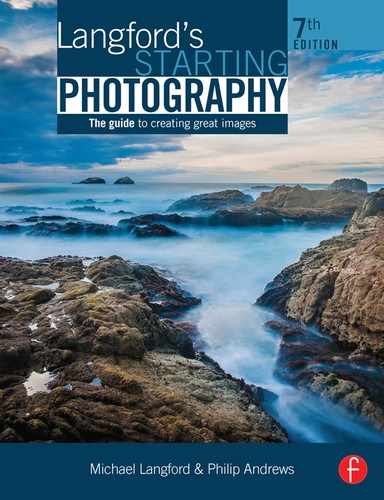Contents
Using the viewfinder – framing up
Projects Developing a personal approach
The rise and rise of the camera phone
Creative Use of Camera
Controls
Tackling Different
Photographic Subjects
Creating black and white images
Lighting for people photographs
Layout and lighting in the studio
Demystifying the photographic process
Digital Processing and Printing
Introducing the digital photography tools
Transferring pictures from the camera to computer
On-phone and in-camera enhancing
Experimental and Constructed Images
Presenting and Assessing Your Work
Sharing Mobile Albums with Adobe Revel
Film users: assessing the results
Digital users: checking images on the desktop
Appendix A Computer connection types
Appendix B Camera memory cards
Appendix C Digital camera sensor sizes and resolution (megapixels)
Appendix D Suggested starting speeds/apertures for difficult night scenes
Appendix E Scanner connections
Appendix F What resolution should I pick?
Appendix G ISO settings and their uses
Appendix H Minimum shutter speeds to stop camera shake
Appendix I Settings to control depth of field
Appendix J Suggested starting speeds to freeze the action of different events
Appendix K Flash guide numbers, apertures and distance
Appendix L Using a hand-held meter
Appendix N Health and safety in photography
Appendix O Black and white film processing and printing
Appendix P Chemically treating black and white prints
